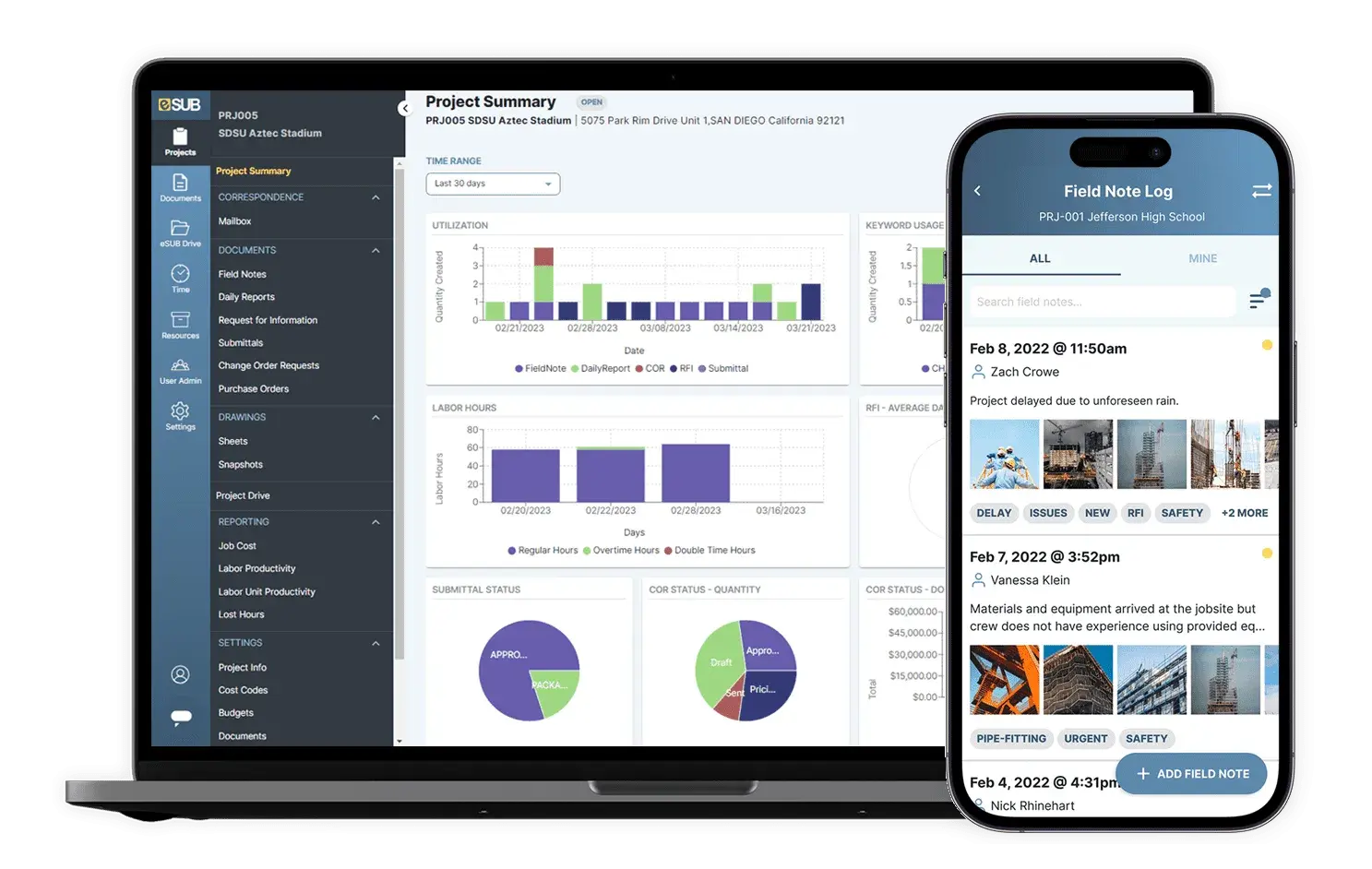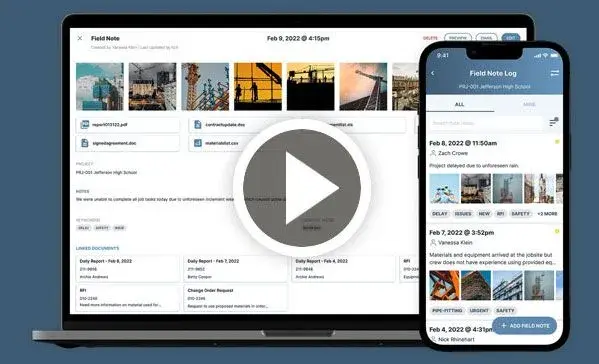How Change Orders Work and How to Manage Them
Change orders are essential for managing project modifications in the construction industry. For trade contractors, managing change orders can be the main differentiator to scale your business and build vital relationships.
In this entry, we explore why change orders are so important and some of the challenges they present. You’ll get tips to improve change order management; we’ll also discuss when and why to use them and how to go through the process with multiple stakeholders.

What is a Change Order?
A change order is a document used to record an amendment or update to the construction contract. Change orders in construction record additional services provided to the customer and their extra cost. Subcontractors who don’t use change orders may forget to bill for the additional updates or, worse, fail to execute the changes altogether.
They are also important because they are documents that show the customer that getting more work done has an additional price. They are a great way to manage the type of client that always wants more for less, rendering visible that additional work is possible at an extra cost.
Impact on Scope of Work and Contracts
Knowing how change orders fit into the workflow is essential to understanding them. The first thing to consider is that a change order cannot exist without an original contract. These original contracts clearly define the scope of work; change orders are simply the updates or amendments required regarding the original scope that was agreed upon.
Construction contracts hold both you and your customer accountable to the terms that you agree on. As a rule, it is important to consider that any client who wishes not to be bound by contract should not be trusted. These are the sort of people who may try to pressure you into doing extra work without additional compensation.
A construction contract can have multiple clauses and details, but in essence, it must clearly state two key components: the scope of work and the price. A detailed scope of work is vital for project costing and managing customer expectations. It is advisable to sit down with the customer and work it out together, ensuring everything the customer wants is included, as well as the services and scope you intend to provide.
Pricing can be given as a total for the project, but it is best given as an itemized list. This gives the customer a more transparent view of what they’re paying for and what to expect. Doing it this way also helps calculate the value of changes if change orders arrive. Your contract might also include any or all of the following:
- Delivery schedule for the project
- Payment terms
- Default conditions and penalties

What makes a good change order?
A change order form has the following elements:
- A revised scope of work: This could mean less or more work. Usually, the customer will ask for additional requirements to what has already been signed in the contract.
- Pricing for new work: The change order must also include the pricing for any relevant updates to the original contract that result from the new scope of work. You may also include details around the delivery schedule for the project given the scope of work is now greater and it may take more time.
- Signatures and proper approval: As with the contract, the signatures of both the contractor and the customer are required. Following the approved approval process outlined in the project contract ensures accountability and prevents disputes during project execution.
- Justified Reasoning: Including a clear and justified reason for the proposed change, whether it’s due to site conditions, design updates, or client preferences is a good practice to prevent disputes down the line.
- Detailed Documentation: All comprehensive documentation, such as the new drawings, specifications, and costs, ensures all stakeholders understand and agree upon the new scope and impact of the amendment.
- Timely Communication: Effective communication among all crucial stakeholders (owners, contractors, and subcontractors) ensures all updates are promptly tackled, minimizing disruptions to the project schedule and budget whenever possible.
The Business Importance of Change Orders
Change orders provide project flexibility, allowing for necessary scope, schedule, or budget adjustments if needed. They help trade contractors in the commercial construction industry for two primary reasons:
Revenue generation and protection: Change orders can lead to additional revenue by documenting and authorizing work outside the original scope agreed upon in the contract. This means that adequately managing change orders is an excellent way for trade contractors to be fairly compensated for their work.
Risk mitigation and dispute resolution: As with most industries, having clear records of all updates is crucial to avoid legal disputes. Having a clear record of agreed-upon changes via change orders is vital. A well-documented process can minimize conflicts and legal challenges between stakeholders.
The Challenges of Change Order Management
However, change order management still has its challenges. Trade contractors need to overcome multiple obstacles, including:
Communication and coordination among stakeholders: Clear communication and coordination between project owners, general contractors, subcontractors, and suppliers represents a challenge but also an opportunity. Change order management done well is an opportunity to move past alignment issues and build meaningful relationships.
Time delays and cost overruns: Change orders can lead to delays in project completion and increased costs. Proper management is the best way to keep execution on schedule and anticipate potential issues.
Conflict and negotiation issues: Change order negotiations can become contentious, leading to disputes and strained stakeholder relationships. However, they are also an opportunity to build a reputation and manage-up, leading to long-term success.
Tips for Effective Change Order Management
Develop a robust change order process:
Establishing a well-defined process for handling change orders is essential, including defining roles and responsibilities for all stakeholders. Creating guidelines for submitting, reviewing, and approving change order requests is vital to streamline communication and decision-making.
Utilize technology and software solutions:
Implement construction management software and mobile applications, like eSUB Cloud, massively simplifies processes. This is a great way to improve communication, coordination, and tracking of change orders. Using software can reduce errors and increase overall efficiency in multiple areas, including change orders.
Create clear contracts and agreements:
Ensure all contracts include instructions for dealing with scope, schedule, and budget changes for all stakeholders. Including dispute resolution processes is also advisable. The more definitions and guidelines in the contracts, the better the foundations for managing change orders are.
Monitor and track project progress:
Doing this will help you identify potential issues early on, allowing for proactive change order management rather than last-minute updates that can hurt project development. Monitor budgets, schedules, and scope, and be ready to tackle deviations effectively and without delay.
Foster strong relationships with stakeholders:
As mentioned, change orders are an opportunity to cultivate positive relationships with project owners, architects, and other subcontractors. Strong relationships are vital to improving negotiations, managing expectations, and tackling changes.
Steps to Implement a Change Order Process
Requests for changes can be uneasy if you don’t manage expectations from the beginning. Keeping that in mind, here’s a step-by-step list of what to do to get it right from the get-go:
1. Make sure the initial contract clearly defines the scope of work in great detail. Being transparent with the customer ensures you meet expectations and have a straightforward way to handle amendments. On top of that, the more detail, the better you can provide accurate cost estimates.
2. Manage expectations about your change order process. Once you’ve agreed on a scope of work, clarify upfront that changes will come with additional costs. Some contractors even include this in their contracts. The customer has to tick a box indicating their understanding that additional work will incur additional charges.
3. Remind the customer to expect a change order when they request a change. Always be candid about the fact that additional work costs money. Don’t rely on the customer to remember agreeing to change orders during your conversation about the scope of work.
Never attempt to gloss over it without addressing it directly.
Let the customer know that you will create a change order. Remind them that the change order will document the additional costs. Seek their sign-off to proceed with the change.
4. Write the requested changes down on a change order, price it out for them, and sign it together. Append the change order(s) to the original contract in your records. Lastly, remember to bill the customer once the work is complete.
How Can eSub Help With Change Orders?
Trade contractors often struggle with messy management practices, miscommunication, and delayed approvals. Unfortunately, poorly managed change orders increase the risk to your business, reduce revenue, and potentially affect your company’s future.
eSUB Cloud is a modern solution tailored specifically for trade contractors in the commercial construction industry. It simplifies the construction change orders management process and facilitates seamless communication between all stakeholders.
With eSUB Cloud, you can ensure you get paid for the work you’ve completed. Our platform provides:
- Comprehensive change order tracking: Keep track of change orders from start to finish, ensuring everyone involved is informed and aligned.
- Quote options: Opt for lump sum or category-based quotes to accommodate various project needs.
- Detailed individual line items: Obtain a detailed view of change orders for more accurate cost estimates.
- Faster approval process: Expedite the approval process with our user-friendly interface and real-time communication tools.
- Custom access permissions: Control who can view and modify change orders, ensuring data security.
Level up your construction project management with eSUB Cloud.


Explore eSUB Document Control Features
Related Case Study
FREE CONSTRUCTION eBOOK










